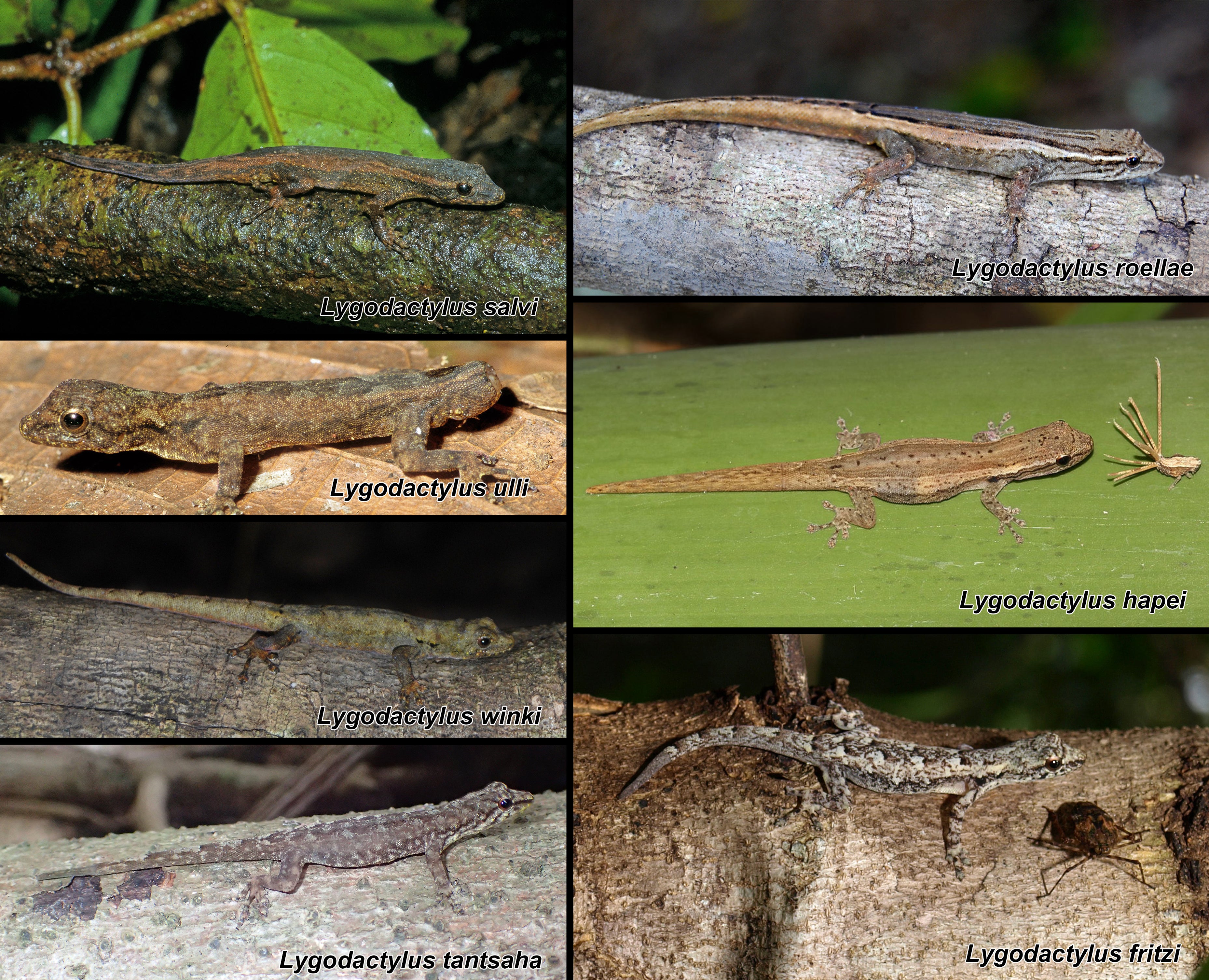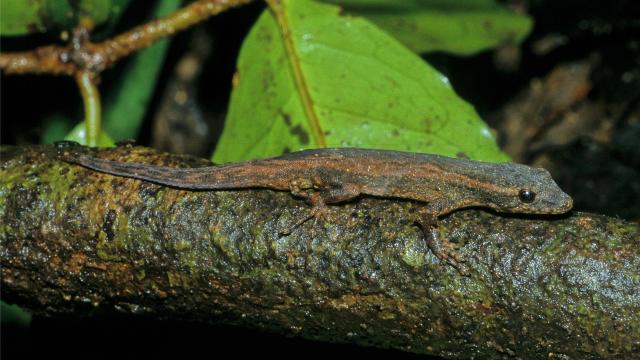Two years after the smallest-yet-known reptile was discovered in Northern Madagascar, scientists probing the same region have discovered even more new cold-blooded friends: eight new species of minuscule geckos.
The animals are from the subgenus Domerguella, in the genus Lygodactylus, a group of diurnal geckos that mostly live in continental Africa and Madagascar. A team of researchers discovered the species hiding in the rainforests in the north of Madagascar, living on leaf litter and twigs in the undergrowth. Though only eight newly described species are introduced in the team’s research, published today in Zootaxa, the team suspects there may be as many as seventeen species in the subgenus hiding away in the island’s rainforests.
“Four different, closely related species that are almost indistinguishable to us, occurring together in the same place, apparently without interbreeding,” said Miguel Vences, a herpetologist at the Technische Universität Braunschweig and the lead author of the study, in a University of Copenhagen release. “This is remarkable, even for Madagascar.”
About 88 million years ago, Madagascar split from the Indian subcontinent as it drifted north towards Asia. In its isolation over the intervening millions of years, the island has developed an amazing breadth of biodiversity.
“The last few years have really been an exercise in realising just how much we have underestimated the diversity of small, brown reptiles and amphibians in Madagascar,” said study co-author Mark Scherz, the curator of herpetology at the Natural History Museum of Denmark, in an email to Gizmodo. “These geckos are the latest piece in a long string of realisations, from tiny frogs, to tiny chameleons, and now tiny geckos.”

The largest of the newly described species is L. tantsaha, with a length of 1.36 inches from the animal’s nose to its vent. The smallest is L. fritzi, which is barely an inch from nose to vent. (For comparison, your little finger is about the same length of some of these lizards.) The lizards rely on their mottled brown scales to camouflage themselves from predators in the rainforest, like snakes and birds.
Last year, a team including Scherz found that there were actually three groups of Lygodactylus geckos, rather than one. The new paper brings the total of one of those groups (Domerguella) to 14 species, with several species still lacking descriptions due to sparse data. Exactly what caused these animals to genetically break off into different species is unclear.
“Potentially subtle niche differences may have caused them to be ecologically different from one another, but there may also be complex behavioural factors, like communication and pheromones, at play,” Scherz said. “Or, perhaps there was a time when they were isolated for long enough to separate into multiple species, and then came together afterwards and were distinct enough to co-exist.”
Because the animals are small, it’s harder for them to cover long distances. They’re also more likely to be separated by natural barriers, like rivers. That’s one possible reason for the differentiation between the animals — the reason that so many species of little things have cropped up on the island.
